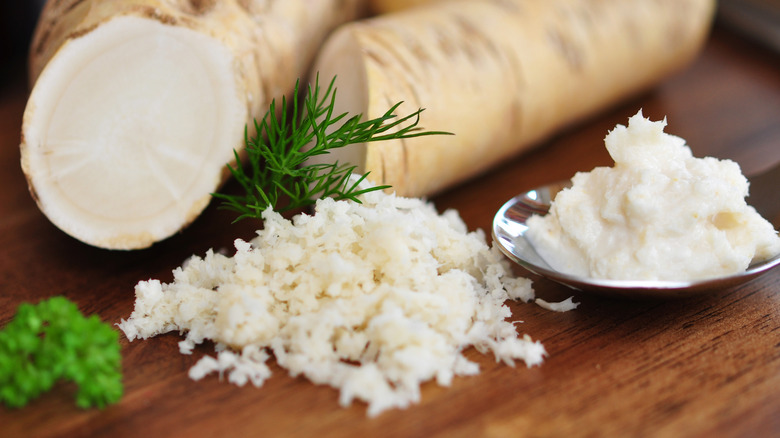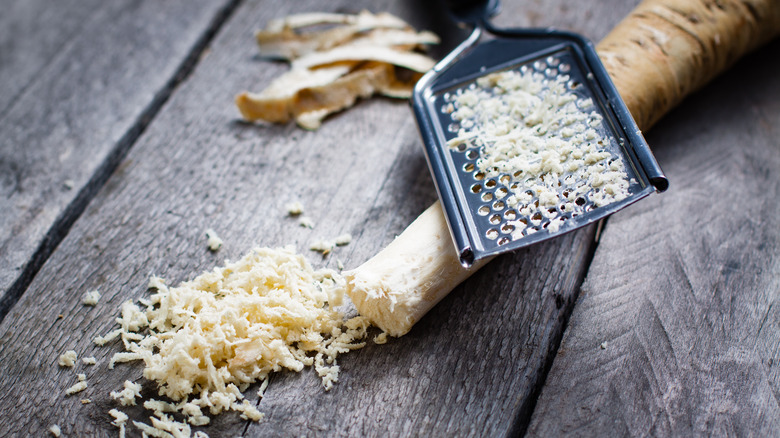The Best Way To Store Horseradish For Maximum Freshness
There are some ingredients where a little bit goes a long way. Such is the case with horseradish. Commonly consumed as a condiment, horseradish is a potent addition to sandwiches, prime rib, and other dishes.
While most people are familiar with the prepared horseradish as a white spread, it all starts with a root. According to Allrecipes, the horseradish plant is part of the mustard family and is grated and combined with other ingredients to create the classic condiment. An oil found inside of the horseradish root, allyl isothiocyanate, is released when the root is cut, per Heathline. That oil is the reason behind horseradish's strong scent and taste. Raw horseradish contains calcium, folate, potassium, magnesium, and other micronutrients, but only in small amounts. The most common way to enjoy horseradish is as a condiment made of grated root, vinegar, sugar, and salt, according to Healthline, while others prefer to add some sour cream or mayo for a creamier spread.
There are a few ways to preserve horseradish
Should you find yourself in possession of more horseradish than you can consume at one time, there's good news — the root can be preserved for future use. The best way to keep the horseradish from going bad before you can use it is to preserve it in jars, according to Rural Sprout. If you grated more root than you need and you don't want to toss the extra onto the compost pile, Rural Sprout says it can be kept in a jar with lemon juice or vinegar and refrigerated. To preserve the whole root, clean and dry it, and then place in a bag before storing in the refrigerator.
If kept properly in the fridge, horseradish root can last for about four months, but its flavor may diminish. Horseradish root can also be kept in the freezer for up to six months. There is a third option for preserving the horseradish root -– pickling -– which is the method that PennState Extension recommends. Its recipe calls for freshly grated horseradish, white vinegar, canning or pickling salt, and powdered ascorbic acid.
Whether you decide to consume the nose-tingling horseradish now or in the future, enjoy this unique vegetable with some zing.

